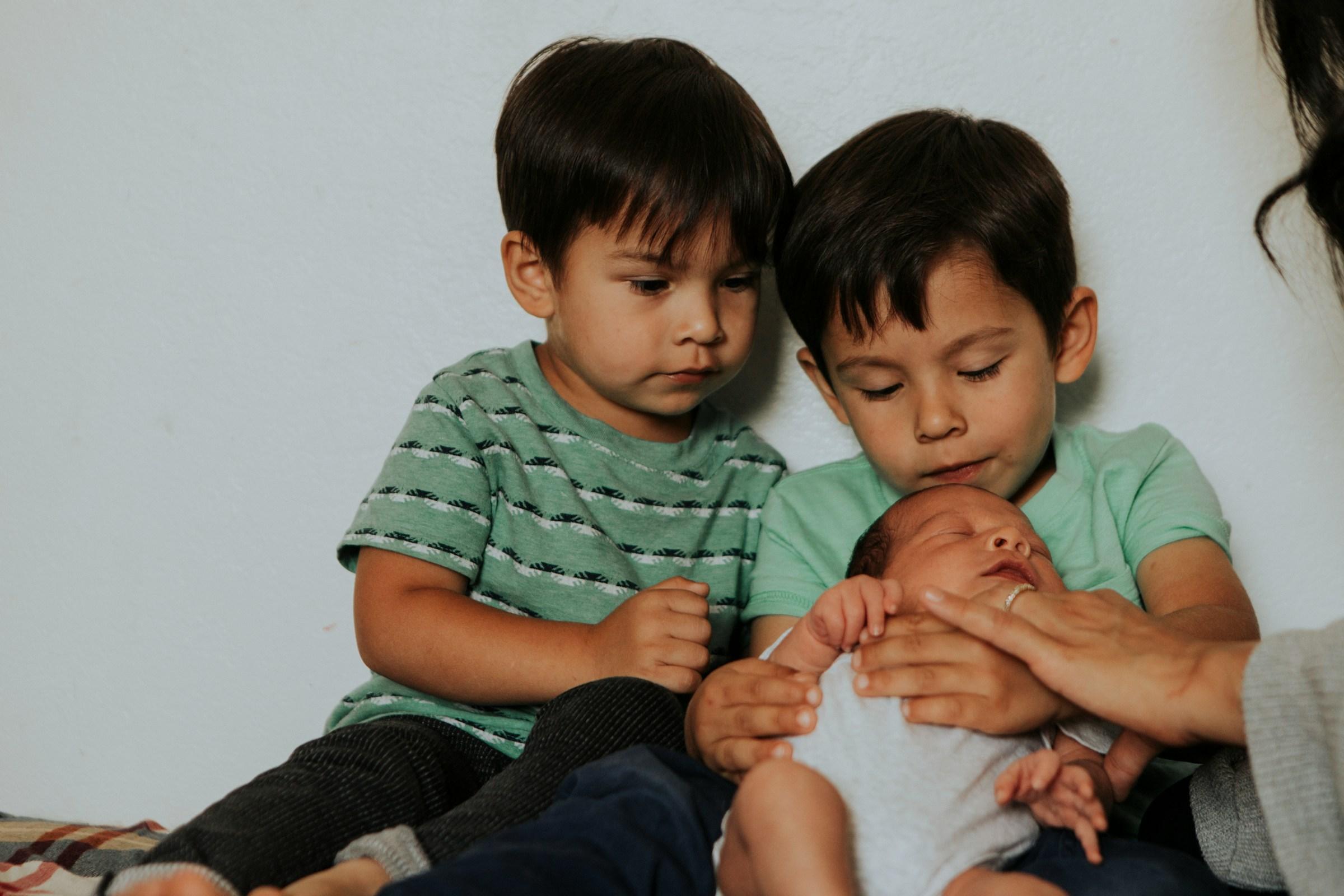Parents rarely wake up one morning and decide to be excessively gentle with their children. It happens slowly, through dozens of small decisions that feel loving in the moment. You let a consequence slide because your child already had a hard day. You step in to email the teacher before your child faces the impact of late homework. You rush to smooth a sibling argument so it does not escalate. Each choice looks like kindness, especially for parents who remember strict or emotionally distant childhoods and want something softer for their own kids. Yet when those choices accumulate, they create a home environment where friction is quietly removed from a child’s daily experience. The price often shows up years later, when the world no longer cooperates with that level of protection.
Gentleness itself is not the problem. Children need warmth, patience, and parents who take their emotions seriously. The issue begins when gentleness is used as a shield against any form of discomfort. Comfort becomes the automatic response, not one of several options. A disappointing grade leads to an immediate attempt to negotiate with the teacher instead of a calm talk about study habits. A repeated clash with a friend at school leads to an instant decision to change classes or activities rather than helping a child work through conflict. A bored afternoon is solved with quick access to screens instead of space to explore, imagine, or even complain a little and then figure something out.
Over time, a pattern forms beneath the surface. The child’s nervous system learns that the sequence goes like this: discomfort appears, and an adult quickly steps in to remove or soften it. The child rarely gets the chance to sit inside that uncomfortable feeling long enough to realize it is survivable. They do not experience boredom that eventually turns into creativity. They do not practise apologising or negotiating with peers after a fight. They do not see their effort change their results in a consistent and visible way. Life starts to feel like a place where external rescue is the norm. The downside of being overly gentle unfolds here, in the gap between intention and outcome. You end up with a child who may be sweet and cooperative on good days, yet who becomes fragile and overwhelmed when things stop going their way.
Healthy growth requires controlled stress. Muscles become stronger when they are challenged with load that is heavy enough to be difficult but not so heavy that it causes injury. Cardio capacity improves when the heart is asked to work harder and then allowed to recover. Without effort, there is no adaptation. Children develop in a similar pattern. They need situations that feel hard yet still manageable. They need to face deadlines, social tension, frustration, and disappointment in doses that stretch them without breaking them.
When parents are overly gentle, they often respond to any sign of struggle as if it is a threat rather than an opportunity for growth. Homework routines are reduced at the first complaint. Chores disappear because arguments about them feel too draining. Rules around bedtime, screens, and schedules are softened until they lose structure. The intention is to protect the child from stress. The effect is to remove the training environment that builds resilience. Without predictable, manageable stress, there is nothing to adapt to. The first serious challenge, whether it is a strict teacher, a demanding coach, or a complicated friendship, then feels like an emergency rather than a difficult but normal part of life.
Gentleness also becomes problematic when it is not anchored in clear boundaries. Children pay more attention to what adults do than to what they say. When parents talk about rules but repeatedly change or ignore them, the message becomes scrambled. A curfew that shifts whenever there is enough whining or pleading is no longer a curfew, it is a suggestion. A family rule about devices being off at night that disappears during busy periods stops being a rule and becomes a loose preference. children are very good observers. They start to understand that persistence and emotional intensity can bend the system. Limits become fluid, not because they are thoughtfully updated, but because parents eventually become tired, guilty, or anxious and give in.
This lack of consistency feels unfair to everyone involved. Parents feel disrespected and wonder why their children push so hard. Children feel confused because the rules exist only sometimes and change depending on mood, stress levels, or context. What looks like an attitude problem is often a system problem. The architecture of the home does not give clear, predictable information. Being endlessly gentle inside that kind of shifting framework does not actually help children feel safe. Safety comes from warmth plus reliability, not warmth plus constant negotiation.
Emotions are another area where overly gentle patterns can backfire. Well meaning parents often try to manage their children’s feelings for them. They sit with every tear, rush to correct every disappointment, and spend long stretches explaining away anger, sadness, or fear. Validation is important, but when every emotion becomes the center of the family’s attention and the parent always acts as the regulator, the child may not develop their own tools. They learn to look outward rather than inward whenever they feel overwhelmed.
In that environment, a child is less likely to practise the basic skills of self regulation. They do not get used to pausing before speaking or acting. They may not learn simple body resets such as deep breathing, taking a short break, or moving their body when emotions run hot. Instead, they look for someone to talk them down, fix the problem, or rearrange the environment. These children often appear highly tuned in to their feelings, but their capacity to contain and channel those feelings remains low.
A more sustainable form of gentleness looks different in practice. It does not rush to erase emotions. It acknowledges them clearly while keeping boundaries firm. A parent might say, with a calm voice, that anger makes sense after an argument, yet hitting is still not acceptable. The conversation does not remove consequences, but it wraps them in respect. The child learns that big emotions are allowed and even expected sometimes, and that expressing them does not cancel accountability.
This connects directly to how consequences are handled. Many parents feel uneasy with the idea of consequences, because they link the word to punishment and their own memories of fear or shame. That mental association can make it hard to follow through without feeling cruel. Yet from a systems view, consequences are primarily information loops. An action leads to an outcome that changes access to something, and that in turn shapes future choices. If a child lies repeatedly and nothing in their environment shifts, the most powerful lesson is not in the lecture about honesty, it is in the silent message that lying works. If homework is ignored and yet the child still enjoys the same level of screen time, outings, or privileges, the system is teaching that effort and reward are unrelated.
Overly gentle parenting often breaks these loops because the thought of making a child uncomfortable feels too painful. Parents talk, explain, and reason, but do not change privileges or routines. The child hears the words yet notices that nothing actually happens. Over time, they stop taking the words seriously, not out of malice, but because the system has trained them that talk and action are separate worlds. Well designed consequences are not angry outbursts or dramatic punishments. They are clear outcomes that were explained in advance, carried out with as little emotion as possible, and followed by a return to normal connection. They might look like a shorter outing next time when curfew is ignored, or less screen time after homework is skipped. They send a simple message: choices shape the landscape of daily life.
Parents who recognise themselves in overly gentle patterns often feel tempted to swing to the opposite extreme. After weeks or months of saying yes and absorbing emotional storms, they suddenly snap. They raise their voice, issue sweeping threats, or impose heavy restrictions they later regret. Children experience this as confusing and frightening, because the emotional tone of the home changes suddenly. The problem is not that parents occasionally lose their cool; everyone does. The difficulty is when the swings between softness and harshness become the main rhythm of the household.
A healthier reset starts quietly, not with a grand announcement. It can begin with just one area of life, such as bedtime, screens, or homework. The parent decides on a small number of clear expectations in that domain, such as lights out at a steady time or devices out of the bedroom before sleep. They also decide on one or two related consequences that make sense and can be repeated without long lectures. When a rule is ignored, the consequence appears as promised, with minimal drama. Over time, trust in the predictability of the system grows, even if the child protests initially.
Alongside this, parents can be honest about their own limits and emotions. Saying out loud that you are tired, irritated, or in need of a short pause before continuing a difficult conversation is not a sign of weakness. It is a live demonstration of self regulation. Children see that adults also feel overwhelmed sometimes, and that those feelings can be managed without breaking relationships or abandoning boundaries. This kind of modelling may be more powerful than any formal lesson about emotional control.
While structure and consequences are strengthened, it is important that gentleness does not vanish. If warmth becomes conditional on performance, children may behave well, yet feel deeply anxious and insecure. To avoid that, parents can protect certain rituals that remain gentle regardless of how the day went. It might be a simple bedtime check in, a shared weekend walk, or a regular moment of connection such as reading together. These small routines communicate vividly that the relationship is stable even when rules are enforced and conflicts occur.
The real goal is not to abandon gentleness or to harden into strictness. It is to bring firmness and softness into the same system. Gentle eyes and a calm voice can coexist with rules that do not shift every time there is resistance. Emotional support can continue without erasing every consequence. When this balance is in place, children learn something priceless: that life is sometimes uncomfortable, yet they are capable of handling it, and they are not alone while they do.
Children raised in such systems do not look calm because everything is easy. They look calm because difficulty is familiar. They have felt disappointment and survived. They have made mistakes, faced the outcomes, and tried again. They understand that effort matters and that boundaries actually protect them rather than simply limiting them. Parents in these homes also feel more grounded. They do not spend as much energy battling guilt when they say no, because they know that structure is part of love, not its opposite.
If you recognise a tendency to be overly gentle, it is not a sign that you are a bad parent. Most of the time, it means you have been trying to shield your child from the kind of pain you faced alone. That instinct comes from care. The work now is to refine the system you built. You can keep the kindness, the listening, and the softness, while adding reliable boundaries and thoughtful feedback. In doing so, you give your child not only a safe place to land, but also the strength and confidence to stand.














